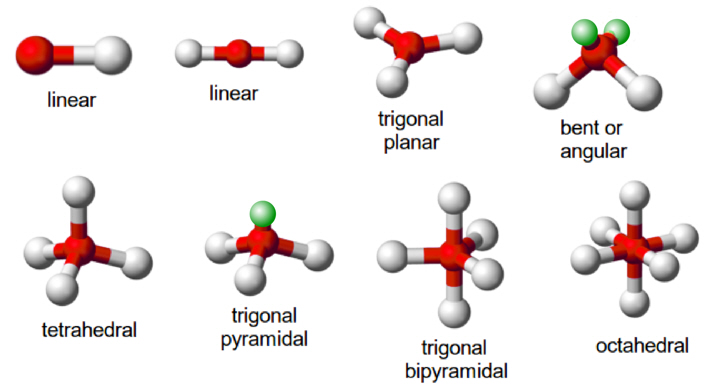Chemical Bonding and Shape of Molecules


↪ In order to explain combination of atoms, Lewis and Kossel introduced electronic theory of valency from the beginning of 20th century.
↪ Kossel mainly stressed to the formation of electrovalent bonds for the inorganic compounds whereas Lewis and Langmuir focused on the formation of covalent bonds for organic compounds.
Valence Electron and valence shell:
⁕ Valence shell: The outermost orbital shell of an atom is called its valence shell. These electrons take part in bonding with other atoms.
⁕ Valence electrons: Electrons in the outer shells that are not filled are called valence electrons.
⁕ OCTET RULE
Lewis and Kossel, 1916 observed that all the atoms of noble gases (except H or He) contain 8 electrons in their outermost orbit. All other atoms during chemical combination try to adjust their electronic configuration like nearest noble gas by losing or gaining or sharing the electron. Due to which chemical combination occur and this rule is called octet rule.
Though, octet rule successfully explains about the bonding in most cases it is unable to explain the bonding in PCl5, BF3, etc.
⁕ POSTULATES OF ELECTRONIC THEORY OF VALENCY
↪ In order to explain the combining capacity of atoms and the main cause of chemical combination, Lewis and Kossel, in 1916, put forward a theory called electronic theory of valency.
The major postulates/assumptions of electronic theory of valency are
↪ The electrons present in outermost orbit are called valence electrons and the corresponding shell is called valence shell.
↪ The combining capacity of each and every atom of an element is determined with respect to number of electrons present in valence shell.
↪ Atoms having 8 electrons in their outermost orbit are stable (inert gas except helium have octet) and all other atoms try to adjust their electronic configuration like nearest noble gas. Due to this tendency chemical combination occurs. This rule is called octet rule.
↪ Atoms that undergo combination achieve the electronic configuration (8 electrons) like nearest noble gases by loss or gain or share of electrons.